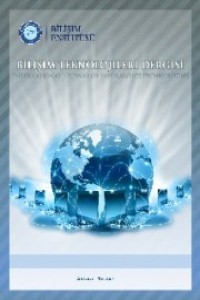Öz
Context:
More and more industries and businesses are being run on software, making
information systems a pivotal component of our lives. Because of globalization
and harsh competition, strategic cost management has become essential to keep
or gain competitive advantage. These two trends make the investigation of Total
Cost of Ownership (TCO) for information systems crucial.
Objective:
We aim to identify how and to what extent TCO concept is used for information
systems.
Method: We
used systematic mapping study (SMS) to identify the use of TCO in information
systems context. We defined 7 research questions (RQs). To answer these RQs, we
selected 75 relevant publications by applying our inclusion and exclusion
criteria.
Results: An
increased interest in TCO for information systems is observed over the years.
We classified these publications per research type and main motivation of
dealing with TCO. The results show that 76% of the selected publications
(opinion and solution proposal) lack validation and evaluation. The main
motivation behind the 72% of the publications is reduction of TCO. According to the results, essential means of
reducing TCO are cloud computing, SaaS model, and multi-tenancy. TCO
calculations are also generally made to compare cloud-based infrastructures
with in-house infrastructures and SaaS model with on-premise software. TCO is
an important criterion in making investment decisions for information systems
such as ERP, CRM.
Conclusions:
To the best of our knowledge, this study is the first SMS on TCO for
information systems. We observed limited collaboration between academia and
industry. More collaboration would enable to gather data for validation and
evaluation. Moreover, methods and frameworks for calculating TCO for
information systems are needed. Benefit realization exercises will complement
TCO analysis to assess success of investments in information systems.
Anahtar Kelimeler
Total cost of ownership cost management information systems software-intensive systems business applications
Kaynakça
- [1] Ellram, L.M. & Siferd, S.P. (1998). Total Cost of Ownership: A Key Concept in Strategic Cost Management Decisions. Journal of Business Logistics, 19(1), 55-84.
- [2] Shank, J.K. & Govindarajan, V. (1992). Strategic Cost Management: The Value Chain Perspective. Journal of Management Accounting Research, 4, 179-199.
- [3] van der Aalst, W. & Stahl, C. (2011). Modeling Business Processes: A Petri Net-Oriented Approach. The MIT Press.
- [4] Scrimshaw, P. (2002). Total cost of ownership: A review of the literature. ICT in Schools Research and Evaluation Series, 6.
- [5] Hurkens, K., van der Valk, W., & Wynstra, F. (2006). Total Cost of Ownership in the Services Sector: A Case Study. Journal of Supply Chain Management, 42, 27–37.
- [6] Wouters, M., Anderson, J.C., & Wynstra, F. (2005). The adoption of total cost of ownership for sourcing decisions: A structural equations analysis. Accounting, Organizations and Society, 30, 167-191.
- [7] Garfamy, R.M. (2006). A data envelopment analysis approach based on total cost of ownership for supplier selection. Journal of Enterprise Information Management, 19, 662-678.
- [8] Galberaith, S. & Kyte, A. (2014, February 25). Application Total Cost of Ownership Principles SMBs Should Follow. Gartner.
- [9] Kitchenham, B. & Charters, S. (2007). Guidelines for Performing Systematic Literature Reviews in Software Engineering. EBSE 2007-001.
- [10] Petersen, K., Feldt, R., Mujtaba, S., & Mattsson, M. (2008). Systematic mapping studies in software engineering. In Proceedings of the 12th International Conference on Evaluation and Assessment in Software Engineering (EASE 2008) (pp. 71–80).
- [11] Petersen, K., Vakkalanka, S., & Kuzniarz, L. (2015). Guidelines for conducting systematic mapping studies in software engineering: An update. Information and Software Technology, 64, 1–18.
- [12] Wieringa, R., Maiden, N., Mead, N., & Rolland, C. (2006). Requirements engineering paper classification and evaluation criteria: A proposal and a discussion. Requirements Engineering, 11(1), 102–107.
- [13] Mell, P. & Grance, T. (2011). The NIST Definition of Cloud Computing. NIST-Special Publication 800–45, Gaithersburg.
- [14] Krebs, R., Momm, C., & Kounev, S. (2012). Architectural Concerns in Multi-Tenant SaaS Applications. In Proceedings of the 2nd International Conference on Cloud Computing and Services Science (CLOSER 2012), Setubal, Portugal.
- [15] Fox, A. & Patterson, D. (2013). Engineering Software as a Service: An Agile Approach Using Cloud Computing. 1st ed. Strawberry Canyon LLC.
- [16] Hamdaqa, M. & Tahvildari, L. (2012). Cloud computing uncovered: a research landscape. Advances in Computers, 86, 41-85.
- [17] Laurent, S. & Andrew, M. (2008). Understanding Open Source and Free Software Licensing. O'Reilly Media.
- [18] Easterbrook, S.M., Singer, J., Storey, M.A., & Damian, D. (2008). Selecting Empirical Methods for Software Engineering Research. In F. Shull, J. Singer, & D.I.K. Sjøberg (Eds.) Guide to Advanced Empirical Software Engineering (pp. 285–311). Springer London.
- [19] Garousi, V., Felderer, M., & Mäntylä, M.V. (2016). The Need for Multivocal Literature Reviews in Software Engineering: Complementing Systematic Literature Reviews with Grey Literature. In Proceedings of the 20th International Conference on Evaluation and Assessment in Software Engineering, pp. 1-6.
Ayrıntılar
| Birincil Dil | İngilizce |
|---|---|
| Konular | Bilgisayar Yazılımı |
| Bölüm | Makaleler |
| Yazarlar | |
| Yayımlanma Tarihi | 30 Nisan 2018 |
| Gönderilme Tarihi | 10 Temmuz 2017 |
| Yayımlandığı Sayı | Yıl 2018 Cilt: 11 Sayı: 2 |


